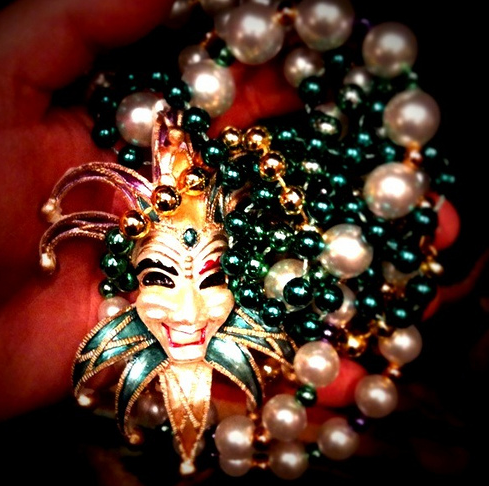You ready to hang decorations, host parties, and exchange gifts?
You may want to wait before you deck your halls with beaded garland. Our friends at Healthy Stuff in Ann Arbor recently conducted tests on beads commonly used as holiday garland and Mardi Gras beads.
(Photo credit: David Reber’s Hammer Photography via photopin cc)
“We estimate that a single year’s inventory of Mardi Gras beads may contain up to 900,000 pounds of hazardous flame retardants and 10,000 pounds of lead,” said Jeff Gearhart, the Ecology Center’s principle researcher.
Researchers tested the beads for lead, cadmium, bromine, chlorine, and phthalates. These toxic chemicals have been linked to birth defects, impaired learning, liver toxicity, and other serious health conditions.
- Over half (64%) of the products tested (56 of 87) had levels of lead above 100 ppm.
- About 74% (14 of 19) of the beaded garlands had bromine levels above 400 parts per million (ppm), suggesting the use of brominated flame retardants
- The interior of Mardi Gras beads, contained concentrations of hazardous chemicals that were as high as the exterior coating of the beads.
The full test results are available here.
The new product testing is just more evidence that retailers and Congress need to get serious about tackling toxic chemicals. Wouldn’t it be nice to know that when you shop at your local retailer the products are free of toxic chemicals? (That is exactly why we launched our Mind the Store campaign to push retailers to get serious about this issue – learn more here).
This news is alarming, but it doesn’t have to mean the end of decorating for the holiday. Here are some tips to help you be toxic free for the holidays.
O tannenbaum!
The debate between a natural and plastic tree is in full swing at my house. When going plastic, make sure you purchase a tree that was not cut from compressed polyvinyl chloride (PVC) sheets. PVC is highly toxic, all throughout its lifecyle. The people who work in PVC manufacturing plants along with those living in the surrounding community are at risk of contamination along with the surrounding environment. If you prefer a natural tree, make sure the tree was grown pesticide free.
Light the Candle!
Most generic candles are made from paraffin. When burned paraffin gives off a carcinogenic compound. Scented candles may also contain lead or lead cores in the wick. To avoid these toxic chemicals try beeswax candles.
Hang all the mistletoe!
Mistletoe is a great natural decoration for the holidays, just make sure you choose an organic pesticide free branch. When decorating your tree and home garland, beads, baubles and charms are the go to items. Get creative, and try making your own ornaments and trim from recycled materials. Many antique Christmas ornaments contain lead paint, but you don’t need to toss these treasured family heirlooms. Handle the ornaments with gloves and make sure they aren’t too close to hot lights.
The stars are brightly shining!
Speaking of lights, many string lights contain high amounts of lead. Don’t go dark this holiday season, buy lead free lights, and go for LED lights which save more energy than conventional lights.
Newer LED lights are a great option to save energy as well.
Who wants their holiday polluted with toxic products? So in the new year, we are going to keep fighting for toxic chemical reform. We want meaningful laws to protect our families and environment.




